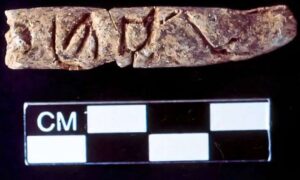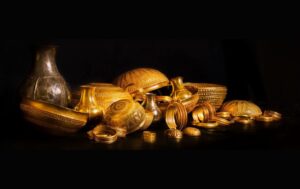If you thought the rongorongo language was younger than English on Easter Island, you’d be wrong-o, wrong-o.
That’s according to a group of Italian researchers, who recently found one wooden tablet inscribed with the glyphic language of its indigenous people dates to the 15th century on the island.
That’s centuries older than previously thought.
Before the discovery, all available evidence showed rongorongo dated to around the 18th century on Rapa Nui (or Easter Island). But it now looks like rongorongo is much older. It may be one of the few independently invented writing systems on Earth.
Results of radiocarbon dating produced the updated perspective. The University of Bologna’s Sylvia Ferrara led a study published Feb. 2 in the journal Scientific Reports. The work focused on one of four rongorongo tablets preserved in a collection in Rome.
Ferrara’s team found that the artifact dates to between 1493 and 1509 — over two centuries before records show the first European arrivals on Rapa Nui in the 1720s.
Rongorongo remains undeciphered, and its origins have long been compromised — not only by the obscurity of the language itself but by its displacement. While Europeans landed on Rapa Nui in the 1700s, they reportedly didn’t notice the language until 1864. They transferred several examples to nearby Tahiti, where an official shuttled them to Europe.
The glyphs now exist on only 27 objects, none of which are located on Rapa Nui.
That’s ironic for a language that could be one of the world’s only forms of writing created without outside influence. The nuances and mechanisms that drive human communication — and especially the synthesis of it — are complex to say the least.

Easter Island. Photo: Shutterstock
But, as Ferrara told LiveScience, “historically speaking, if you borrow a writing system, then you keep it as close to the original as possible.”
Results inconclusive
Take one look at rongorongo and you won’t find many similarities between it and the English alphabet. Ferrara said linguists have recognized more than 400 different rongorongo glyphs among the roughly 15,000 surviving characters. None correspond to any known writing system.
The gap in the research is that while it’s possible to know how old the wood is, there’s no way to tell how old the inscriptions are. Ferrara called it “unlikely” that the piece of wood lasted hundreds of years before the scribe performed the work.
Rafal Wieczorek, a University of Warsaw chemist who was uninvolved in the study but has performed separate work on rongorongo tablets, told LiveScience that the data wasn’t conclusive, but was encouraging.
“I actually believe that rongorongo is one of the very few independent inventions of writing in human history, like the writing of the Sumerians, the Egyptians and the Chinese,” he said. “But belief is a different thing than hard data…so ideally, we would like to test all the tablets.”
To check out rongorongo for yourself, go to the team’s interactive website, where 3D models of the tablets are available. The specimen in question is “Tablet D” — with the prominent gouge just above center.






